An Efficient and Energy-Aware Cloud Consolidation Algorithm for Multimedia Big Data Applications
Abstract
:1. Introduction
2. Motivation and Related Work
2.1. Research Motivation
2.2. Related Work
3. The Proposed Consolidation Algorithm
3.1. System Model
3.2. Preprocessing
| Algorithm 1. The Preprocessing Algorithm | |
| Input: Ti, where ∀i ∈ {1, 2, …, n} | |
| Output: Ordered set of Ti | |
| 1: | begin |
| 2: | for each Ti ∈ TaskSet |
| 3: | Retrieve task information; |
| 4: | Calculate processing cost; |
| 5: | TempTaskSet ← (Ti , calculated_cost); |
| 6: | end for |
| 7: | Sort TempTaskSet in descending order by calculated_cost; |
| 8: | Return TempTaskSet; |
| 9: | end |
3.3. Task and VM Assignment Algorithm
| Algorithm 2. The VM Monitoring Algorithm | |
| Input: Rj, where ∀j ∈ {1, 2, …, m} | |
| Output: Ordered set of Rj | |
| 1: | begin |
| 2: | for each Rj ∈ ResourceSet |
| 3: | Retrieve resource information; |
| 4: | Calculate overhead cost |
| 5: | TempResourceSet ← (Rj , overhead_cost); |
| 6: | end for |
| 7: | Sort TempResourceSet in ascending order by overhead_cost; |
| 8: | Return TempResourceSet; |
| 9: | end |
| Algorithm 3. The Task and VM Assignment Algorithm | |
| Input: OrderedTaskSet, OrderedResourceSet | |
| Output: map (Ti, Rj), where ∀i ∈ {1, 2, …, n}, ∀j ∈ {1, 2, …, m} | |
| 1: | begin |
| 2: | for each Ti ∈ OrderedTaskSet |
| 3: | Rj ← Extract the first element from OrderedResourceSet |
| 4: | if Rj does not meet the requirement then |
| 5: | Trigger VM provisioning task; |
| 6: | Rj ← Get newly provisioned resource information; |
| 7: | end if |
| 8: | Map Ti to Rj; |
| 9: | Trigger monitoring task for the next iteration |
| 10: | OrderedTaskSet = OrderedTaskSet – Ti; |
| 11: | end for |
| 12: | return map (Ti, Rj); |
| 13: | end |
4. Performance Evaluation of the Algorithm
5. Conclusions
Acknowledgments
Author Contributions
Conflicts of Interest
References
- Chen, M.; Mao, S.; Liu, Y. Big data: A survey. Mob. Netw. Appl. 2014, 19, 171–209. [Google Scholar] [CrossRef]
- Alaimo, C.; Kallinikos, J. Computing the everyday: Social media as data platforms. Inf. Soc. 2017, 33, 175–191. [Google Scholar] [CrossRef]
- Su, Z.; Xu, Q.; Qi, Q. Big data in mobile social networks: A qoe-oriented framework. IEEE Netw. 2016, 30, 52–57. [Google Scholar] [CrossRef]
- Buyya, R.; Yeo, C.S.; Venugopal, S.; Broberg, J.; Brandic, I. Cloud computing and emerging it platforms: Vision, hype, and reality for delivering computing as the 5th utility. Future Gener. Comput. Syst. 2009, 25, 599–616. [Google Scholar] [CrossRef]
- Agesen, O.; Mattson, J.; Rugina, R.; Sheldon, J. Software techniques for avoiding hardware virtualization exits. In Proceedings of the 2012 USENIX Conference on Annual Technical Conference, Boston, MA, USA, 13–15 June 2012; USENIX Association: Berkeley, CA, USA, 2012; pp. 373–385. [Google Scholar]
- Karakoyunlu, C.; Chandy, J.A. Exploiting user metadata for energy-aware node allocation in a cloud storage system. J. Comput. Syst. Sci. 2016, 82, 282–309. [Google Scholar] [CrossRef]
- Escheikh, M.; Barkaoui, K.; Jouini, H. Versatile workload-aware power management performability analysis of server virtualized systems. J. Syst. Softw. 2017, 125, 365–379. [Google Scholar] [CrossRef]
- Armbrust, M.; Fox, A.; Griffith, R.; Joseph, A.D.; Katz, R.; Konwinski, A.; Lee, G.; Patterson, D.; Rabkin, A.; Stoica, I.; et al. A view of cloud computing. Commun. ACM 2010, 53, 50–58. [Google Scholar] [CrossRef]
- Dongarra, J.J.; van der Steen, A.J. High-performance computing systems: Status and outlook. Acta Numer. 2012, 21, 379–474. [Google Scholar] [CrossRef]
- Zhu, W.; Cui, P.; Wang, Z.; Hua, G. Multimedia big data computing. IEEE Multimed. 2015, 22, 96–c3. [Google Scholar] [CrossRef]
- Zhang, W.; Zhou, R.; Zou, Y. Self-adaptive and bidirectional dynamic subset selection algorithm for digital image correlation. J. Inf. Process. Syst. 2017, 13, 305–320. [Google Scholar]
- Alnusair, A.; Zhong, C.; Rawashdeh, M.; Hossain, M.S.; Alamri, A. Context-aware multimodal recommendations of multimedia data in cyber situational awareness. Multimed. Tools Appl. 2017, 1–21. [Google Scholar] [CrossRef]
- Viana, P.; Pinto, J.P. A collaborative approach for semantic time-based video annotation using gamification. Hum. Cent. Comput. Inf. Sci. 2017, 7, 13. [Google Scholar] [CrossRef]
- Cheng, Z.Q.; Wu, X.; Liu, Y.; Hua, X.S. Video ecommerce++: Toward large scale online video advertising. IEEE Trans. Multimed. 2017, 19, 1170–1183. [Google Scholar] [CrossRef]
- Koutsakis, P.; Spanou, I.; Lazaris, A. Video scene identification and classification for user-tailored qoe in geo satellites. Hum. Cent. Comput. Inf. Sci. 2017, 7, 15. [Google Scholar] [CrossRef]
- Ciubotaru, B.; Muntean, C.H.; Muntean, G.M. Mobile multi-source high quality multimedia delivery scheme. IEEE Trans. Broadcast. 2017, 63, 391–403. [Google Scholar] [CrossRef]
- Yu, Y.; Miyaji, A.; Au, M.H.; Susilo, W. Cloud computing security and privacy: Standards and regulations. Comput. Stand. Interfaces 2017, 54, 1–2. [Google Scholar] [CrossRef]
- Wu, T.; Dou, W.; Wu, F.; Tang, S.; Hu, C.; Chen, J. A deployment optimization scheme over multimedia big data for large-scale media streaming application. ACM Trans. Multimed. Comput. Commun. Appl. 2016, 12, 1–23. [Google Scholar] [CrossRef]
- Simmhan, Y.; Aman, S.; Kumbhare, A.; Liu, R.; Stevens, S.; Zhou, Q.; Prasanna, V. Cloud-based software platform for big data analytics in smart grids. Comput. Sci. Eng. 2013, 15, 38–47. [Google Scholar] [CrossRef]
- Gai, K.; Qiu, M.; Zhao, H. Cost-aware multimedia data allocation for heterogeneous memory using genetic algorithm in cloud computing. IEEE Trans. Cloud Comput. 2017, PP, 1. [Google Scholar] [CrossRef]
- Jayasena, K.P.N.; Li, L.; Xie, Q. Multi-modal multimedia big data analyzing architecture and resource allocation on cloud platform. Neurocomputing 2017, 253, 135–143. [Google Scholar] [CrossRef]
- Guo, J.; Song, B.; Richard Yu, F.; Yan, Z.; Yang, L.T. Object detection among multimedia big data in the compressive measurement domain under mobile distributed architecture. Future Gener. Comput. Syst. 2017, 76, 519–527. [Google Scholar] [CrossRef]
- De Maio, V.; Prodan, R.; Benedict, S.; Kecskemeti, G. Modelling energy consumption of network transfers and virtual machine migration. Future Gener. Comput. Syst. 2016, 56, 388–406. [Google Scholar] [CrossRef] [Green Version]
- Rathod, S.B.; Reddy, V.K. Ndynamic framework for secure vm migration over cloud computing. J. Inf. Process. Syst. 2017, 13, 476–490. [Google Scholar]
- Gai, K.; Qiu, M.; Zhao, H.; Tao, L.; Zong, Z. Dynamic energy-aware cloudlet-based mobile cloud computing model for green computing. J. Netw. Comput. Appl. 2016, 59, 46–54. [Google Scholar] [CrossRef]
- Finogeev, A.G.; Parygin, D.S.; Finogeev, A.A. The convergence computing model for big sensor data mining and knowledge discovery. Hum. Cent. Comput. Inf. Sci. 2017, 7, 11. [Google Scholar] [CrossRef]
- Tao, F.; Feng, Y.; Zhang, L.; Liao, T.W. CLPS-GA: A case library and pareto solution-based hybrid genetic algorithm for energy-aware cloud service scheduling. Appl. Soft Comput. 2014, 19, 264–279. [Google Scholar] [CrossRef]
- Shai, O.; Shmueli, E.; Feitelson, D.G. Heuristics for resource matching in intel’s compute farm. In Proceedings of the Job Scheduling Strategies for Parallel Processing: 17th International Workshop—JSSPP 2013, Boston, MA, USA, 24 May 2013; Desai, N., Cirne, W., Eds.; Springer: Berlin/Heidelberg, Germany, 2014; pp. 116–135. [Google Scholar]
- Procaccianti, G.; Lago, P.; Bevini, S. A systematic literature review on energy efficiency in cloud software architectures. Sustain. Comput.Inf. Syst. 2015, 7, 2–10. [Google Scholar] [CrossRef] [Green Version]
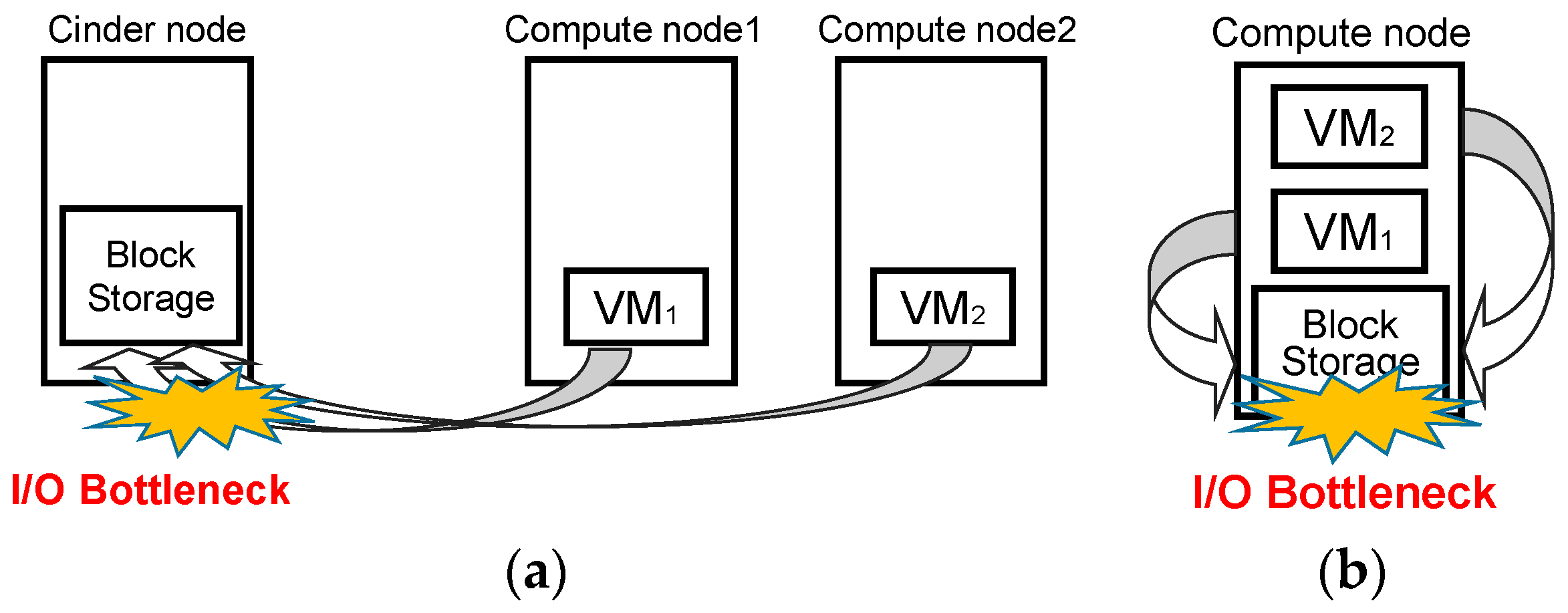


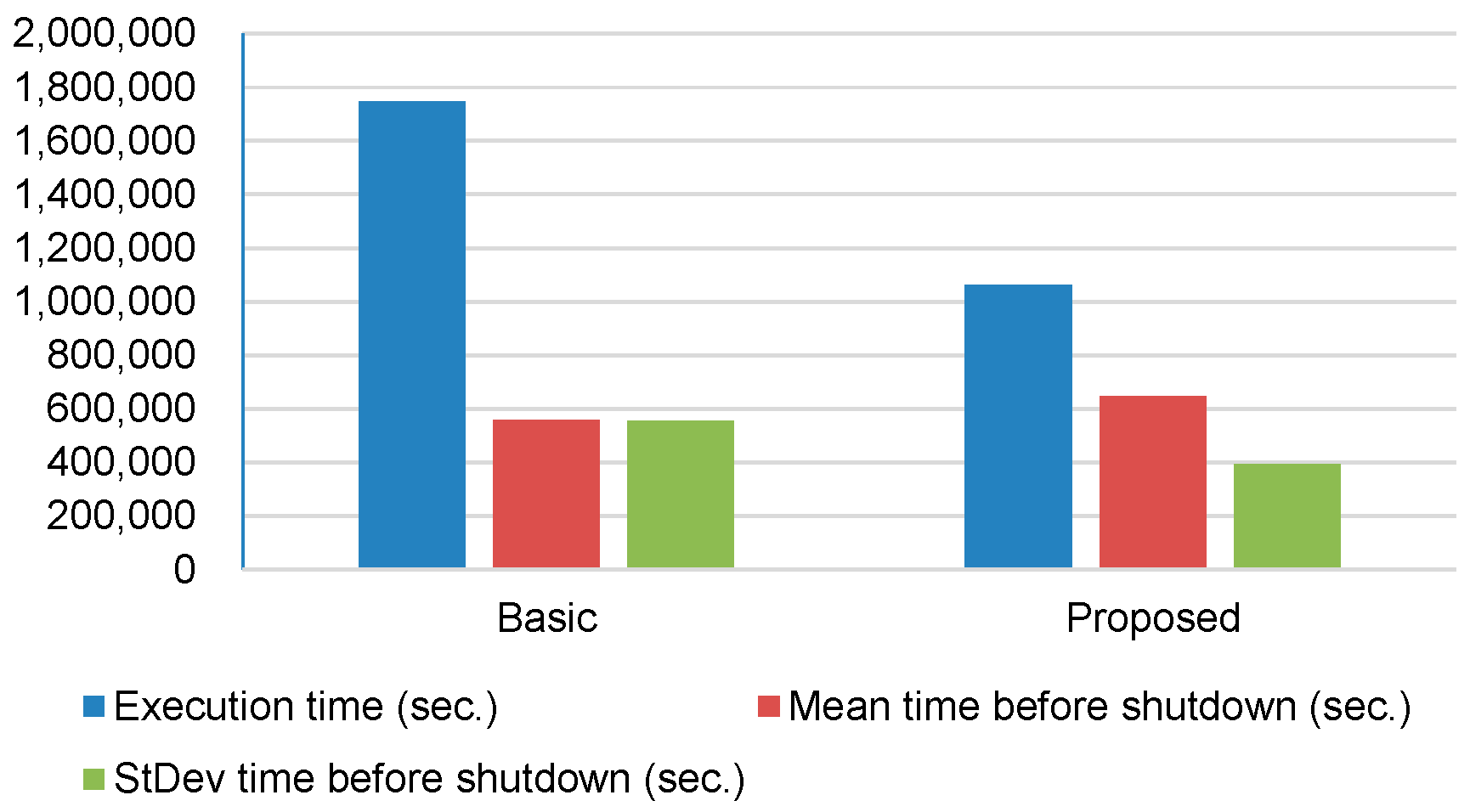
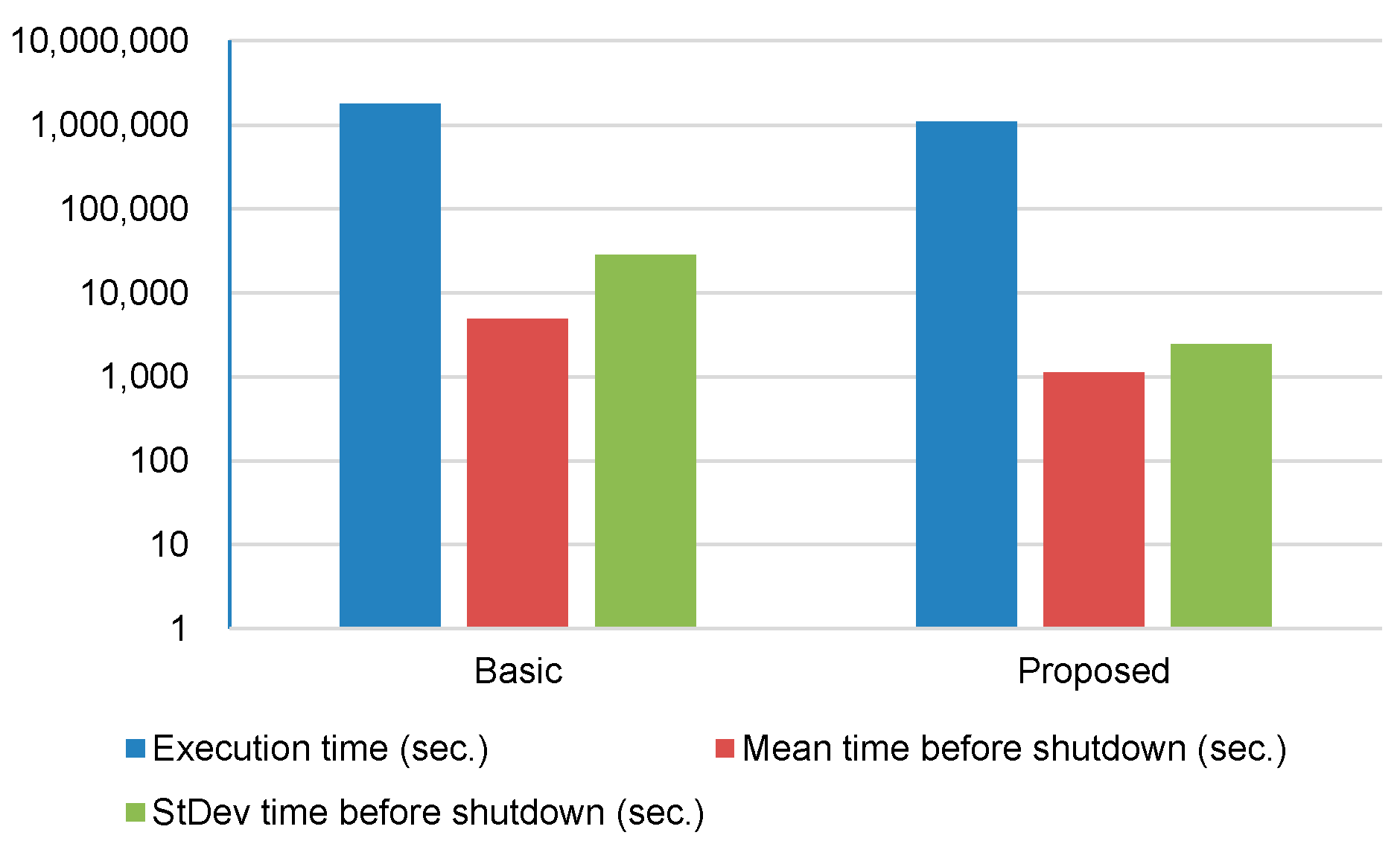
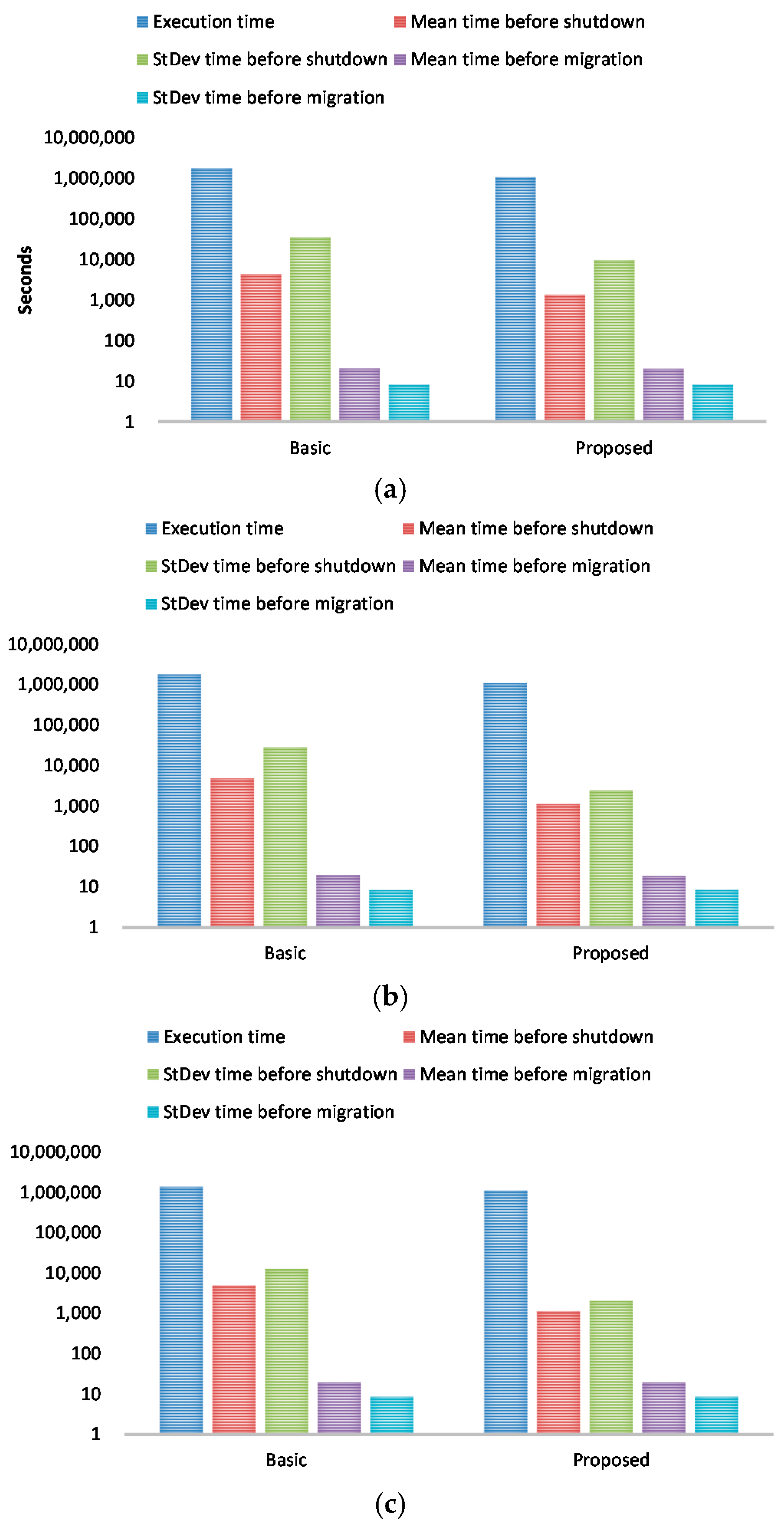
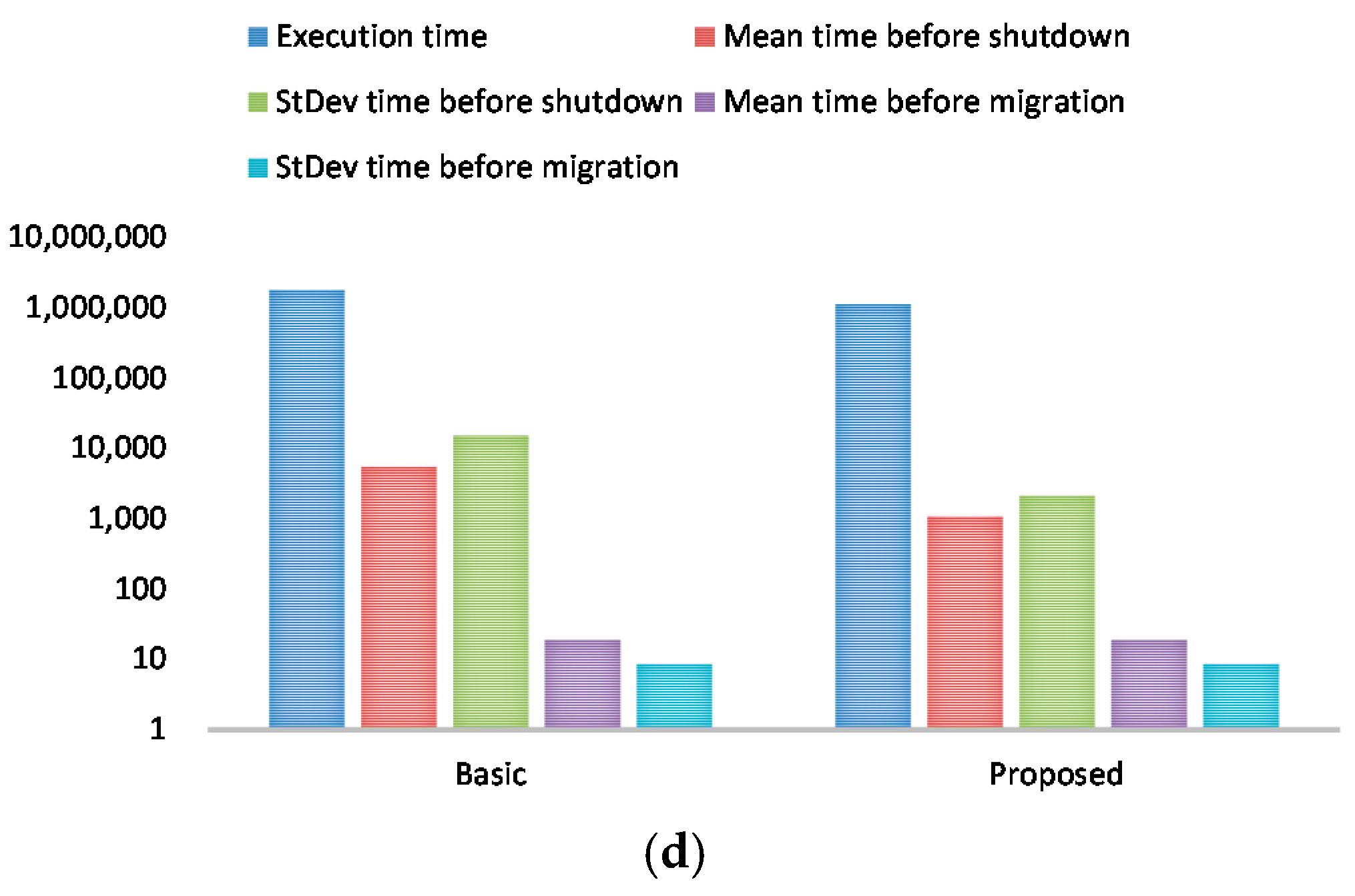
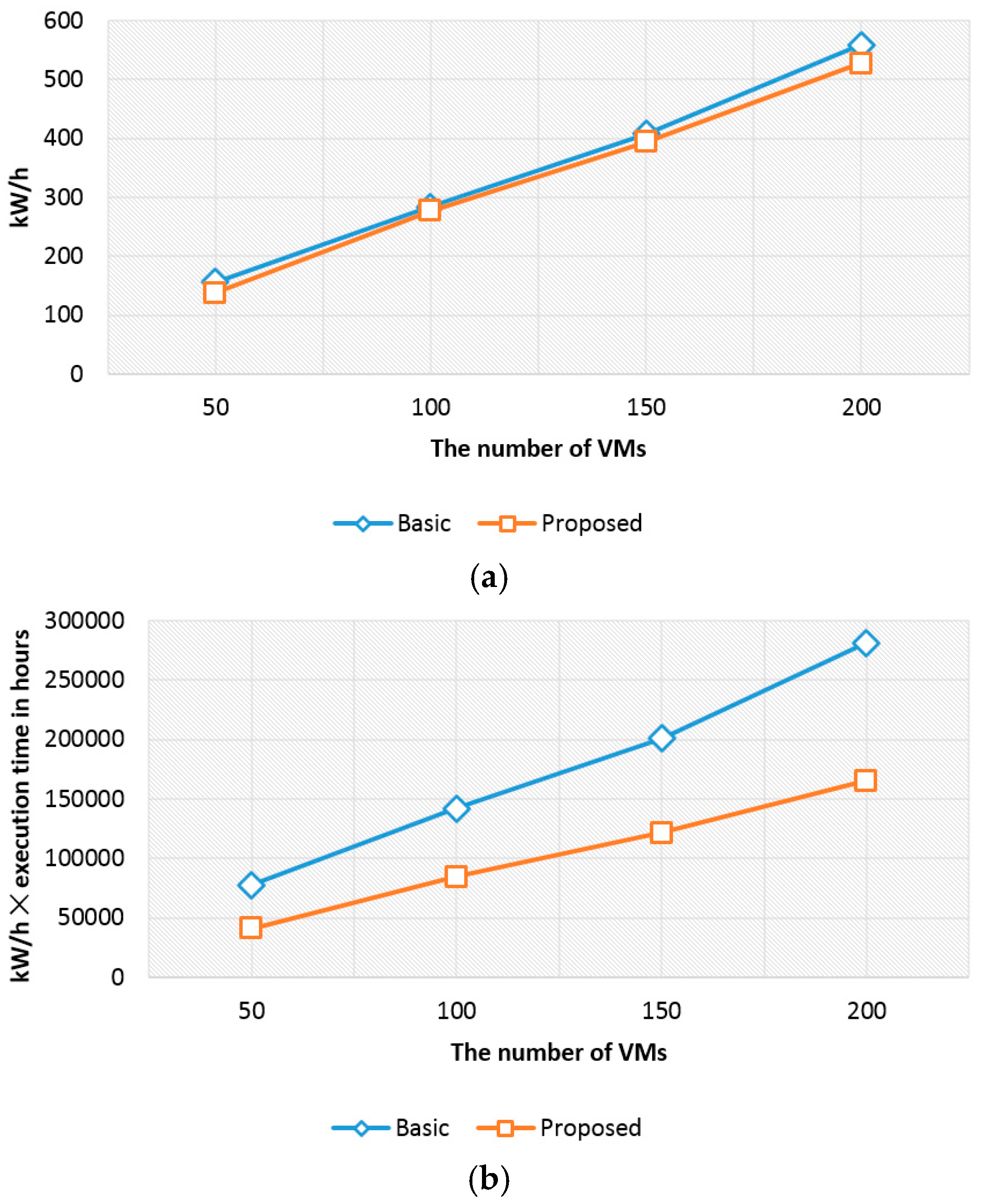
| The Number of VMs | Basic | Proposed |
|---|---|---|
| 50 | 0.062% | 0.056% |
| 100 | 0.084% | 0.075% |
| 150 | 0.102% | 0.087% |
| 200 | 0.105% | 0.097% |
© 2017 by the authors. Licensee MDPI, Basel, Switzerland. This article is an open access article distributed under the terms and conditions of the Creative Commons Attribution (CC BY) license (http://creativecommons.org/licenses/by/4.0/).
Share and Cite
Lim, J.; Yu, H.; Gil, J.-M. An Efficient and Energy-Aware Cloud Consolidation Algorithm for Multimedia Big Data Applications. Symmetry 2017, 9, 184. https://doi.org/10.3390/sym9090184
Lim J, Yu H, Gil J-M. An Efficient and Energy-Aware Cloud Consolidation Algorithm for Multimedia Big Data Applications. Symmetry. 2017; 9(9):184. https://doi.org/10.3390/sym9090184
Chicago/Turabian StyleLim, JongBeom, HeonChang Yu, and Joon-Min Gil. 2017. "An Efficient and Energy-Aware Cloud Consolidation Algorithm for Multimedia Big Data Applications" Symmetry 9, no. 9: 184. https://doi.org/10.3390/sym9090184





